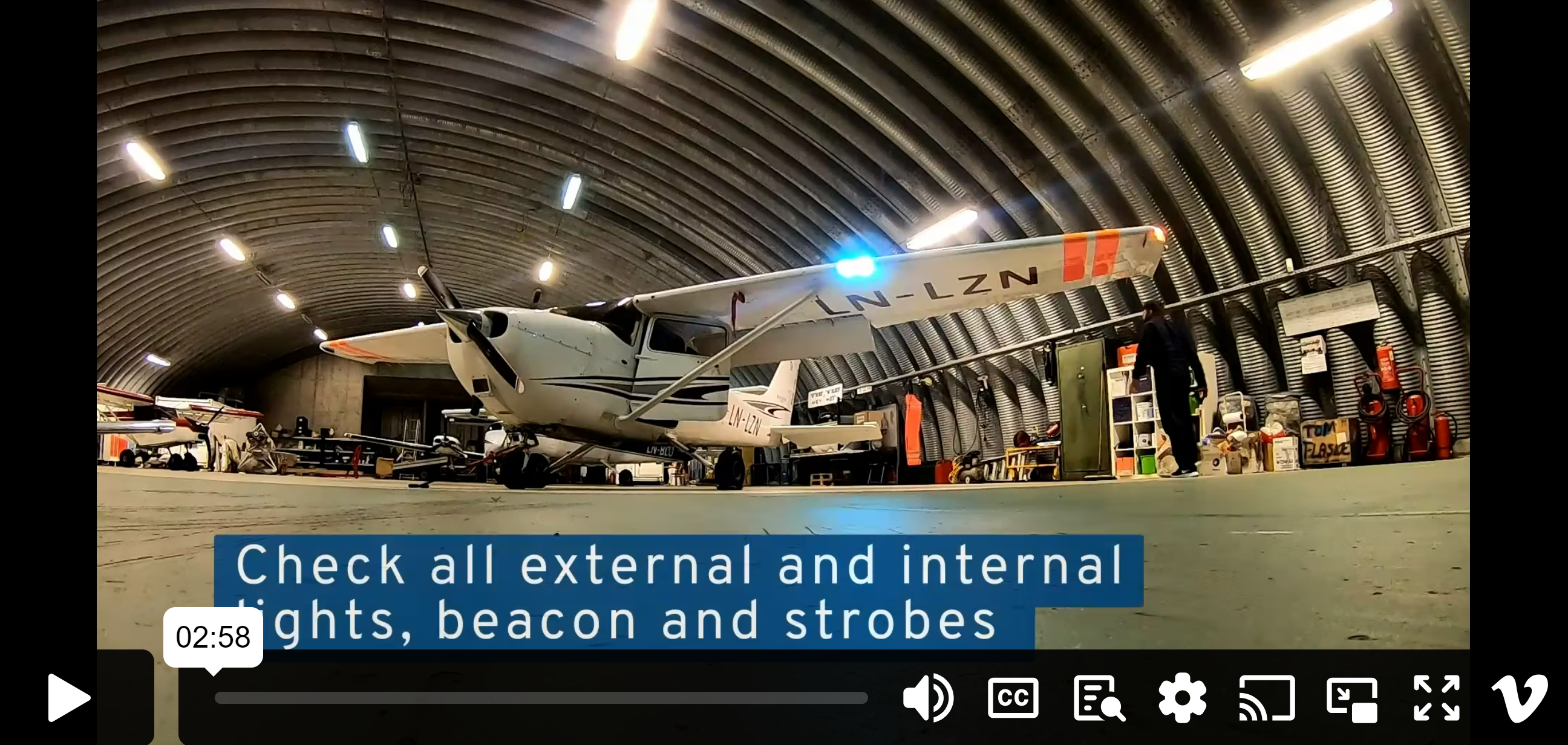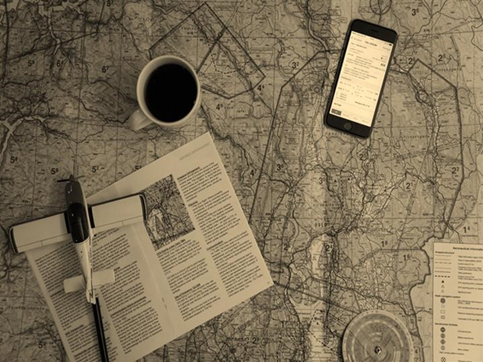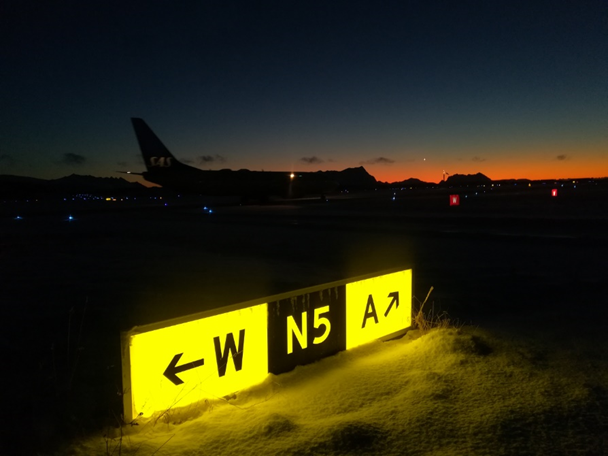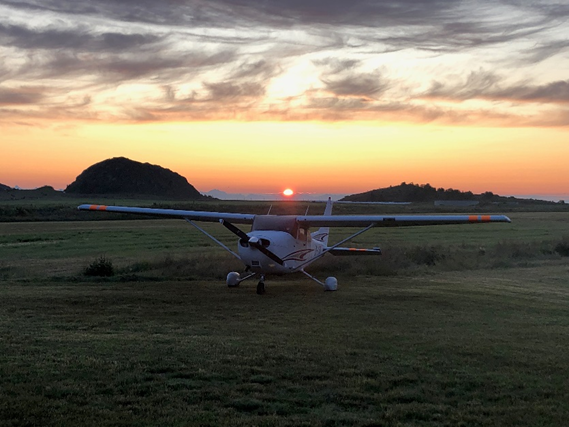Article provided by Thomas Hytten, CAA Norway
About this content: Used in Newsletter for private pilots in Norway. September 2024.
Content is free to use and edit. No references required.
Author: Hans Edvard Sunde, CAA Norway
Original content:
https://us14.campaign-archive.com/?u=7da33d50c37770012f95c2fec&id=faf555eb62
Flying at night can be an incredibly exciting and rewarding experience. However, it requires careful planning, thorough preparation, and a solid understanding of the specific challenges that night flying entails.

https://vimeo.com/753828111/60ce639e81?share=copy
Video credit: CAA Norway
Route Planning
When planning your route, it is important to select landmarks that are easily visible at night, such as cities, highways, and large bodies of water. At night, completely different landmarks may dominate compared to during the day. For example, wind farms can often be seen from a great distance. In winter, illuminated ski trails and downhill ski resorts, are usually easy to spot. Avoid areas with little lighting, as it can be difficult to navigate. Using GPS, electronic maps, and navigation aids is highly recommended.

Picture credit: CAA Norway
Emergency Procedures
Be prepared for emergencies. Have a plan for what to do if you lose visual reference or encounter technical issues. Familiarize yourself with nearby airports and emergency landing areas along your route.
Pros and cons
Night flying offers fantastic views of city lights and the starry sky. There is often less air traffic, which can make the experience more relaxing. The air is usually calm, without thermals or turbulence. On the other hand, it can be more challenging to navigate and detect potential hazards.
Close to instrument flying
VFR at night, as the name implies, is carried out under visual conditions. Even if conditions are VMC, it can be completely dark, with no stars nor moon. Flying in complete darkness is as demanding as flying without visual references in clouds. Therefore, you should have enough instrument training to be comfortable flying with few or no external references. Although visibility outside may be good, the boundary with instrument flying is only theoretical.
Moonlight
Has it been a while since you last flew at night? Choose a night with good moonlight. Light from a full moon, combined with flying over a snow-covered landscape, will soon feel like daytime flying. It provides excellent external references.
Starry nights
A night with little or no moonlight but otherwise clear skies offers little light, and it may be difficult to see the ground — close to impossible without a snow-covered landscape. Additionally, it can be challenging to distinguish stars from lights on the ground, confusing your perception of the horizon, potentially leading to vertigo. In such conditions, proper use of instruments is your best ally.
“White Out”
The combination of high terrain, snow-covered ground, and clouds is especially challenging at night. This makes it very difficult to differentiate between terrain and clouds and also makes navigation particularly difficult. In such conditions, it is important to choose routes with clear and distinct visual references.
Fewer airfields available during night
There are few airfields equipped with lighting. Often, local regulations restrict the use of airfields for night flying. You can typically find this information in the AIP or the airfield's website.

Picture credit: Simen Follesø Røiseland
Remember that temperatures tend to drop during the night. VFR-night flights often take place on clear nights when the Earth's surface radiates its heat. At places like Gardermoen, fog often forms close to the ground, with vertical visibility down to a few hundred feet around five in the morning, even if it was clear when you took off. Radiation fog can come as a surprise, even for meteorologists.
At night, landing sites are few and far between since not every small landing strip is equipped with runway lights. Bring as much fuel as you can within weight limitations, and also pack warm clothes to survive a cold night outside. In some places, the terminal closes at night, even if the airport remains open for flight operations, which could make overnight stays uncomfortable and cold.
Aeroplane required equipment for night flying
EASA Part-NCO.IDE.A.120 b) and c) list the additional aircraft equippment you need in addition to that needed for VFR day flying:
(b) Aeroplanes operated under visual meteorological conditions (VMC) at night, or in conditions where the aeroplane cannot be maintained in a desired flight path without reference to one or more additional instruments, shall be, in addition to (a), equipped with:
..(1) a means of measuring and displaying the following:
….(i) turn and slip;
….(ii) attitude;
….(iii) vertical speed; and
….(iv) stabilised heading;
and
..(2) a means of indicating when the supply of power to the gyroscopic instruments is not adequate.
(c) Aeroplanes operated in conditions where they cannot be maintained in a desired flight path without reference to one or more additional instruments, shall be, in addition to (a) and (b), equipped with a means of preventing malfunction of the airspeed indicating system required in (a)(4) due to condensation or icing
Flying VFR at night requires specific equipment and training, careful preparation, and a thorough understanding of the unique challenges of night flying. With the right planning and caution, it can be an incredibly rewarding experience, giving you a new dimension of flying.

Picture credit: CAA Norway
Related references
Sunny Swift: Horizon visibility in Night VFR - Issue 33 | EASA (europa.eu).
Sunny Swift: Weather radar information - Issue 12 | EASA (europa.eu).
Sunny Swift: Weather briefing process - Issue 17 | EASA (europa.eu).
Sunny Swift: TAF, what it means in practice - Issue 21 | EASA (europa.eu).
FAA Airplane Flying Handbook (3C) Chapter 11 Night Operations.
FAA Practical Risk Management for Night VFR Flying.
Night VFR accident between Ibiza and Reus (ES).
Night VFR accident in Dominica (FR).
Please log in or sign up to comment.